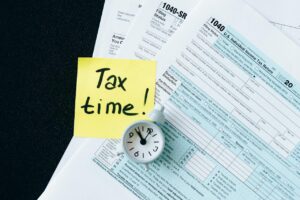Real Estate Tax a Comprehensive Review

Real estate tax on property, which is mostly imposed on properties and land. In some countries, like the United States, the tax can also be imposed on commercial as well as farm equipment and inventories. The tax may also apply to jewellery, automobiles, furniture, and the intangibles such as mortgages, bonds, and shares of stock, which are a representation of claims to, or the ownership of tangible wealth. The amount due is determined not on an individual’s nor the company’s net worth however, it is based on the value of its gross, regardless of obligations. Real estate taxes that are not normally classified as a tax on the property are the ones arising from transfers of properties (by the sale, gift) and special costs for particular improvements or services provided by the public (such as those referred to as special assessment within the United States), certain varieties of agricultural imports as well as a portion of income tax which apply to the assumed or real yield on agricultural or urban land.
How Have Property Taxes Evolved?

The real estate tax burden of different nations differs greatly according to legal considerations and administrative reality, the tradition as well as the availability of alternative sources of income, the structure of the governments (especially at the level of local governments, where the revenue generated by the tax could be of significant importance), and also the type of public services offered. Property classification according to different kinds has provided a basis to alter tax burdens for taxpayers. Sometimes, this is done through the removal of a certain percentage of the worth of certain types of properties (machinery or forests, mine furniture, securities, etc.) and sometimes by altering the tax rates. In an economy where taxpayers have little difference in comparison to one another, for example, in the case of a farm community comprised of families with similar dimensions and income, the amounts of real estate tax imposed on households could reflect the capacity of the household to pay for its expenses and the advantages it enjoys as a result of services provided by the public. Taxes and benefits will not appear as clear or obvious in an intricately industrialised society, but it is there. In many countries in which property taxes are in place, their revenues are utilised for local or state purposes as opposed to national authorities. In the United States, the property tax is around half of the funds that local governments collect. In many countries, the tax is applied primarily to urban real estate (see personal and real property). In some nations, property tax revenue may be behind the increase of incomes in the country when the assessment of tax revenues is not reflected in variations in the price. The increased usage of computerized systems to appraise and evaluate is helping to solve the issue. Property taxes are also expensive to collect. For instance, a study by the Organisation for Economic Co-operation and Development (OECD) found that by the beginning of the 21st century tax on property accounted for just 0.5 per cent of the total taxes collected for Greece yet accounted for greater than one per cent of Greece’s tax administration expenses. The biggest challenge about property taxes is working out the fairness of valuation. The complexity of our global economy has caused an increase in the complexity of the issue. In the beginning, taxes on land were based on the area, not values that were assessed upon the world of ancient times and certain areas of medieval Europe and also on those in the American colonies. The total income from the land (annual income, for example) ultimately became the base of the real estate taxes. In the following years, attempts were undertaken to establish the owner’s “ability to pay,” this meant that any other items, including personal property including farm properties or pets as well as tools, were incorporated into the appraisal. The process of identifying these properties for taxation has been a problem for a long time Taxing the intangible aspects of wealth has proved to be even more difficult because of the ease with which intangible properties can be hidden away from tax authorities.
Administration
It was in North America the early New England colonies created taxes to cover all of the “visible estates,” both personal and real. It was a “general property tax,” which applied to all property and was included in the law books for several U.S. states by 1800. Actually, in the colonial era, the South and colonies used a limited amount of real estate tax, but in the middle of the 19th century property taxes were the main sources of revenue across all states. The basis of property taxes was determined as encompassing intangible wealth. Because the value of mortgages as well as other intangibles were primarily right claims in the real estate as well as tangible personal property and tangible personal property, the result was two tax rates. The double burden was deemed unfair and the concealment of taxation was straightforward, the implementation of a “property” tax on intangibles became a challenge. This led to the collapse of a tax that applied to every property. Today, only real estate makes up the majority part of the U.S. property tax base. In the US, local governments primarily receive their revenue from property taxes. The state government has long derived a major fraction of their funding from real estate taxes. However, only a few states receive less than a small portion of their revenues by relying on this tax source. Some states, however, charge a percentage or all the operating properties of railroads as well as other services. Some authorities favour a state takeover of the property tax, partly because they believe that states would administer it more efficiently and partly to remove inequalities in taxing capacity among local governments–especially regarding financing for public schools. The responsibility for all administrative functions rests completely on government officials. Administration involves the search or identifying of the property that is to be taxed as well as its appraisal, determination of the proper tax rate and collection. When the amount of tax is determined by income, the property’s earnings instead of its capital value has to be determined. Certain aspects, including valuation, are the subject of judgment rather than facts. It is important to note that the determination of the value for real estate tax purposes isn’t an unintentional outcome or a consequence of a deal made for other reasons like the payment of wages or a retail sale. Taxes on property are often determined by the reported value of sales and can be manipulated to lower tax rates. The three primary approaches to the current assessment of property include rent value, capital value as well as market value. In the majority of European nations, the appraisal of real estate typically is based on the value of its capital. Traditional wisdom suggests that capital value is determined based on the value of rental, and treats these as capital gains. But, the majority of European nations and countries like the United States, endeavour to appraise property per the fair market value of the property. It is typical for a large majority of Asian nations to determine the value based on the rental amount that the house is worth. Based on the concept of rental valuation, the tax calculation is based on the gross rental amount that the property will earn in the normal market. A few Asian countries use a less complicated however, it is not necessarily fair. They collect a set sum based upon a certain measure of land. Administrative challenges can be difficult when finding out (1) the actual property physically (the area, topography, and the area of land, the area of the property, its materials, and the condition of the buildings; and the quantity and varieties of machinery or inventory items) as well as (2) the worth for the asset. A successful determination of the value of a property requires skilled staff with access to relevant information in a variety of forms (including the physical properties of the property, as well as real-time market situations) and the appropriate infrastructure most of which aren’t available in the level of local government. A better administration of real estate tax depends on a range of elements, like an improved mapping process and the possibility of obtaining current and accurate information about the properties. Also, the situation could be enhanced by increasing the number of sources for information on values as well as more advanced methods of valuation. The valuation calculations vary from basic to complicated. For certain types of property single-family dwellings the sales of identical properties, referred to by the term “comparables,” provide a solid basis for valuation. Some properties, including offices and apartments, could be appraised concerning the amount of income they generate. Particularly specialized and unique buildings, such as factories or other structures which are integral elements of operations–for tax purposes, the value should be based on estimates of the cost to reproduce (the expense of replicating the same building) plus depreciation. Inventory of business inventory, which may be liable to tax on property, can be appraised according to the company’s records, and so can machines and other equipment.
Rates of Tax

Due to the frequent use of under-market assessment, nominal tax rates provide a false impression of the burden borne by property owners. In the past, when government services were limited and property taxes were the only source of income for residents, taxes were calculated simply by dividing the number to estimate expenditures by that of the assessed value. If the estimated expenditure was $400,000 and assessments for the area were 40 million A rate of 1 percent is likely to suffice. These days, government officials are more likely to determine the amount of money that would be available if the current real estate tax rate continues to be maintained, before attempting to decide the likelihood that taxpayers would accept increased taxes as a way to fund additional expenditure. If a significant need for one certain service, however, officials do not want to increase the “general fund” rates, the legislature can decide to to impose the use of a “special” rate. As an example, U.S. state governments utilized property taxes as an element that could be flexed and relied on the other taxes. Depending on the state’s fiscal situation, if these taxes were surplus or inadequate it was the responsibility of the state to increase or decrease the property tax. States still retain the Constitutional authority to raise or lower their property tax rates. The real estate tax limits are commonplace and are sometimes imposed in the state constitution, and more often through law. In each type of government in the United States – cities, counties schools districts, and cities–a ceiling amount will be established. Sometimes, the ceiling or “cap” may be changed through a referendum, or by a specific legislation. It’s difficult to determine the extent to which these limitations have prevented the expansion of the government’s spending. A result is the creation of special districts that have independent taxing authority, which means that they aren’t dependent on tax limits. The tax on properties provides an illustration of tax incidence–that is an identification of individuals who are ultimately responsible for the tax directly or indirectly. Real estate tax on land is expected to be capitalized (absorbed by the future profits which will result through the property) if it’s not compensated by the benefits of public services. The exact amount buyers would pay for a particular piece of land is contingent on the net earnings that it will generate in comparison to yields that other investments can provide. For instance, if the net profit from the land is estimated to be $1200 per year for the duration of time and it is the average yield for longer-term assets of 6 per cent that means the land would have a value of $20,000. If the tax rate is $300 per year is in place, the yield on the land drops to $900, while the value of the land decreases to $15,000. The tax rise is thought to be capitalized. For the purchaser of property that generates income, the tax that was in effect when the land is purchased will not become any burden later on, as the cost of purchasing is already reducing the amount of property taxes that are due annually. Because land prices typically increase in the past, it’s reasonable to conclude that the property tax hasn’t drastically lowered land prices, but it has acted to slow the rise. A similar analysis is used commonly to evaluate the effect of property real estate tax increases for existing homes as well as other types of property. The extent to taxes for newly built residential and nonresidential properties as well as others will be covered by taxpayers–the issue of the shifting or incidence will involve several different variables. A lot depends on the fact that the tax being considered is assessed by a single locality, for example, the city, county, school district or any of the jurisdictions. When the tax is enforced by all the jurisdictions the tax will most likely be paid in the short term by capital owners. However, if the tax reduces savings, it might result in higher rates or lower wages over the longer term (rather instead of burdening owners of capital). Check out the taxation. An increase in the land tax could alter the ownership conditions. The sum collected from landowners will not be affected, however, the private landowners would keep less of it, with the public treasury growing. The cost system will continue to be assigned to land uses. The real estate tax on improvement could be reduced significantly. Real estate tax relief for buildings with deterioration is minimal, however, in the case of buildings with high quality, it could be substantial concerning the net ROI. A greater number of buildings, including new and superior ones, will be provided. The modernization and upkeep of the existing structures would be more efficient. Longer-term the landowners will receive lower increases in value of their land, while the general people would receive the most. The socially generated value will be channelled towards the public sector rather than for private purposes. Taxes may be tied closer to the costs of services provided by the government. Tax opponents to site value taxation argue that the unearned growth in the value of land is being capitalized, and they question the legitimacy of imposing such a tax on current land values in which the owners have made payments with good trust. They are sceptical of the capability of assessors to provide fair appraisals to justify much higher tax rates for the property. Additionally, they question whether the only land, without structures, can provide an appropriate real estate tax base.



